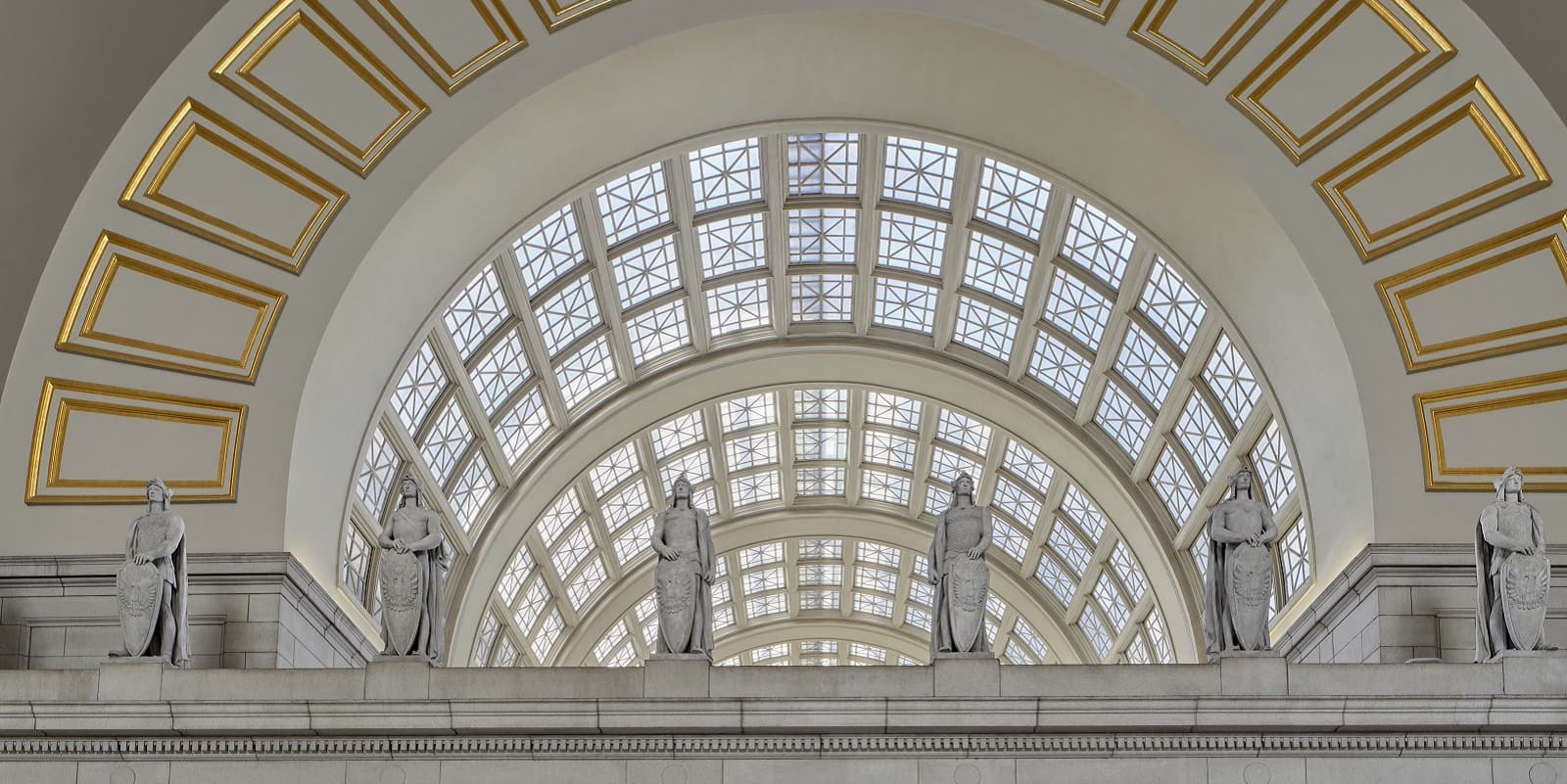As anyone who has ever visited Union Station in Washington, D.C., knows, the station and all who travel through it are overlooked by 46 massive plaster statues which were modelled after ancient Roman soldiers, also called Legionnaires. These statues have graced the station since being installed in 1913, after having been hand-carved by Louis Saint-Gaudens starting in 1906. In 1906, Louis Saint-Gaudens was contracted to create plaster statues, to complement the architectural style of the building. He carved 46 Roman soldiers by hand, which were installed in 1913, and are still in place today.
Born in New York City in 1984, Louis Saint-Gaudens was the brother of famed sculptor Augustus Saint-Gaudens; both brothers were prominent members of the Beaux-Arts generation. In addition to the Legionnaires at Union Station, Louis also sculpted work that resides at the Boston Public Library, the Brearly School, the U.S. Customs House (in New York), the Metropolitan Museum of Art, and elsewhere.
In style, the statues compliment the classical beaux-arts style of the station. Symbolically, they are a protective force, guarding over all who travel through the halls of Union Station.
In the century that has passed since their creation and installation, the Legionnaires have experienced a variety of damage, past cleanings, and prior restoration work. In 2019, John Canning & Co. was selected by the Union Station Redevelopment Corporation, which strives for the overall preservation and restoration of Union Station, to investigate and repair the 36 interior Legionnaire Statues.
In this two-part series, we detail the various types of damage found on the statues, as well as the cause of that damage. We also outline the key steps taken to clean and repair the damage to bring the statues back to their former glory, while offering recommendations for ongoing maintenance.
The Damage
All of the Legionnaire statues have experienced damage and aging. Interestingly, the condition of the statues varied significantly depending on where they were located (to the North, South, East, or West of the station). This is due to the fact that statues in different locations have been exposed to different elements, as well as the fact that statues in different areas have had different levels of intervention and restoration over the years.
The Legionnaire statues on the North Side of the station appear to have had the greatest number of interventions over the years, and as such they appeared to be in overall good condition. That being said, a significant amount of inpainting and overpainting has occurred, hiding flaws and evidence of previous interventions. In the images below, you can see evidence of staining, chipping, and other damage.
A number of the Legionnaire statues on the South Side are situated directly in front of windows. Over the years, direct exposure to sunlight has caused the finish to become sensitive and delicate. These statues, like many others throughout the station, have accumulated a layer of corrosive pigeon guano over the years, further weakening the finish. You can see evidence of this and other damage in the images below, as well as accumulation of pigeon guano.
The Legionnaire statues on the West Side appear to have been cleaned once in the past, and are a lighter tone compared to the statues located elsewhere. Because these statues are exposed on all sides, they have experienced the most impact damage and general loss. The images below detail this general loss, as well as the lighter overall coloring of the statues compared to others.
In addition to the location-specific damages, the statues share common abrasions, losses, and scratches. Losses have generally been caused by a confluence of impact and the weakening of the substrate by corrosive elements (such as pigeon guano). A number of losses appear to have also occurred at or around the time of installation, as these have aged at the same rate as the rest of the original finish. Other abrasions and scratches appear to have been caused by deliberate vandalism, as is the case on two statues in which initials have been carved.
Next Steps
With the current condition of the statues thoroughly analyzed and documented, our team was able to go to work in cleaning, repairing, and restoring the Legionnaire statues to their prior glory.
Without that documentation, creating a clear and accurate plan of action for the restoration would have been next to impossible. It’s for this reason that we always recommend that restoration work begins first with an analysis of the existing structure before any work begins.
To learn more about the specific steps taken to clean, repair, and restore the plaster statues, click here.




















